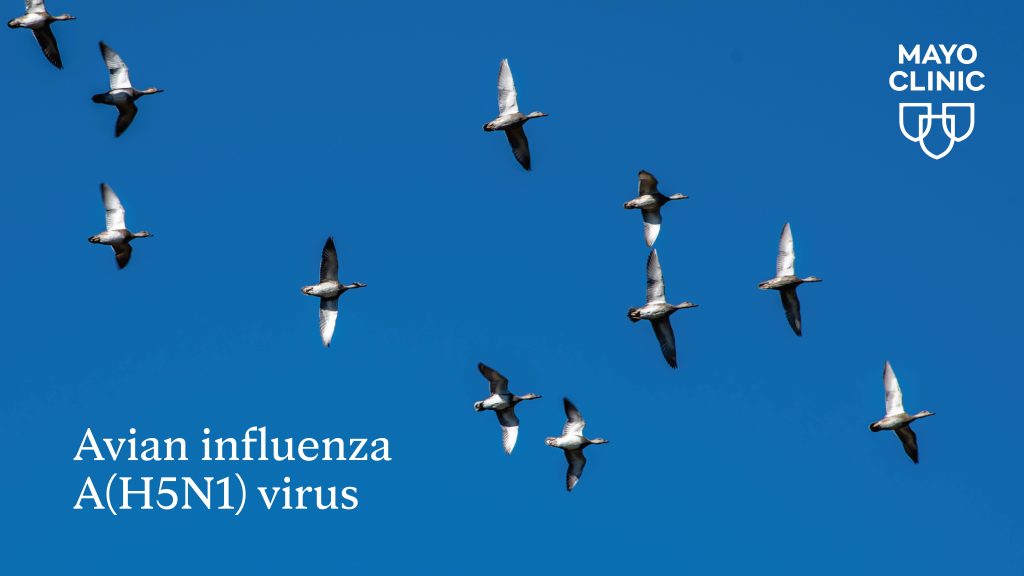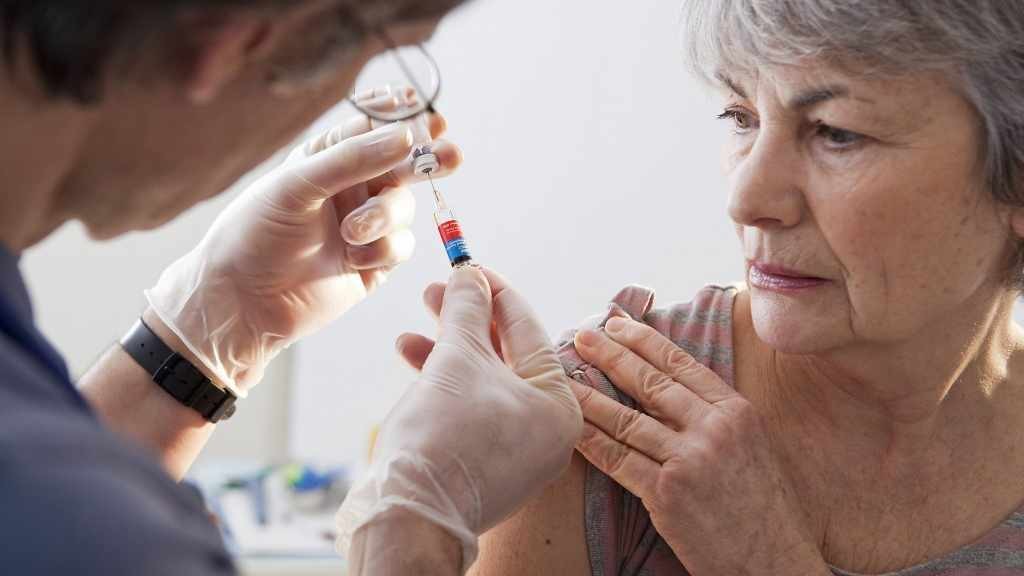-
Health & Wellness
(VIDEO) Mayo Clinic virologist explains concern about avian flu and why flu vaccine is important

For the first time in the U.S., H5N1 avian influenza, commonly known as the bird flu, has been detected in a pig. The virus is widespread among wild birds globally. It continues to cause outbreaks in American poultry and dairy cows, and it has infected humans. The Centers for Disease Control and Prevention reports 46 confirmed human cases of bird flu in the U.S., all linked to animal exposure with "no evidence of human-to-human transmission."
"The strain that was detected in pigs most closely matched or resembled the strain that's found in wild birds and not the strain that has been detected in dairy cattle," says Dr. Matthew Binnicker, director of the Clinical Virology Laboratory at Mayo Clinic.
Watch: Dr. Matthew Binnicker talks about avian flu and why flu vaccine is important
Journalists: Broadcast-quality sound bites are available in the downloads at the bottom of the posts. Name super/CG: Matthew Binnicker, Ph.D./Laboratory Medicine and Pathology/Mayo Clinic
Pigs and flu viruses
Pigs are particularly concerning because their airways can be infected by both human and avian influenza viruses. Dual infections increase the risk of the viruses mixing and creating a new strain.
"It's important because influenza, both human strains and avian strains, have what's called a segmented genome, so the genome is broken up into different parts. If, by a rare occurrence, an animal or a human becomes infected with two different types of influenza virus and those viruses happen to infect the same cell, there's a chance that the segmented genomes can become reassorted, and it can lead to the production of a brand-new virus," he says.
While most novel viruses do not spread efficiently from person-to-person, there is a rare chance that a new virus could develop the ability to spread and cause serious illness.
"Pigs are thought of as an evolutionary playground for influenza viruses because multiple types – human and avian – can infect them, potentially leading to these reassortment events and production of new viruses," he says.
Antigenic drift and antigenic shift
Dr. Binnicker says influenza viruses change in several ways. One is antigenic drift, which consists of small changes over time due to mutations that occur when the virus replicates.
"Antigenic drift is the reason why we need to get an annual flu shot every year. It's because the virus that's circulating right now will, through the process of replicating its RNA genome, mutate and change over the next six to 12 months," he says.
Antigenic shift is different.
"It's when an animal, such as a pig, becomes infected with two different influenza viruses at the same time. In the rare event that this happens, the viruses unpack their genome in the same cell, and in the process of making a new virus, the segmented genomes reassemble in a new way that leads to the production of a brand-new virus that the population might have never seen before. The proteins on the outside of the virus look completely different — or different enough where a human's immunity doesn't recognize it," explains Dr. Binnicker.
Risk for U.S. food source
Dr. Binnicker says the risk to food and dairy in the U.S. is currently low. However, there is a risk of illness from consuming unpasteurized milk and milk products.
"Do not consume unpasteurized milk and unpasteurized milk products because we know that some dairy cattle are infected with the virus, and there is some risk if you're consuming or eating unpasteurized products," he says.
Cooking pork thoroughly kills the virus, making it safe to eat.
How to protect yourself from avian flu infection
There are steps you can take to reduce your risk of infection.

"The best thing you can do is get the influenza vaccination," he says. "It's beneficial for a number of reasons."
"One, it helps keep you from getting typical human influenza, which can be a very severe disease. Two, it helps prevent you from spreading influenza to other people. And then third, with circulation of avian influenza in birds and mammals, and now dairy cattle and even in pigs, it prevents the chance that we see a reassortment event," Dr. Binnicker says.
He explains that vaccination reduces the chance of a human being infected by both avian and human flu strains, and it lowers the risk of spreading human flu to animals such as pigs, reducing the odds of a reassortment event that could lead to a novel virus.
Dr. Binnicker adds that anyone with a bird flock or a poultry or dairy facility should avoid contact with sick or dead animals to reduce the risk of infection, and if interaction is necessary, wear a mask, gloves and eye protection.







